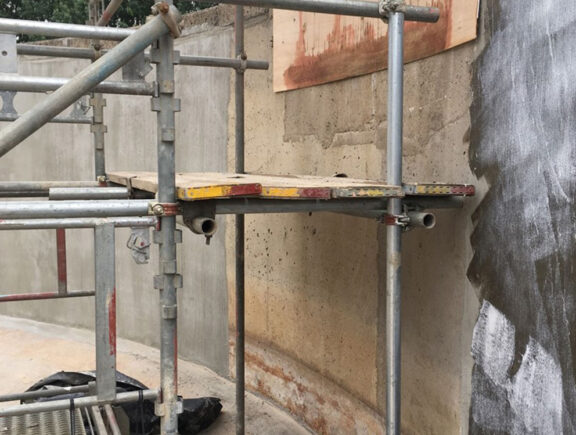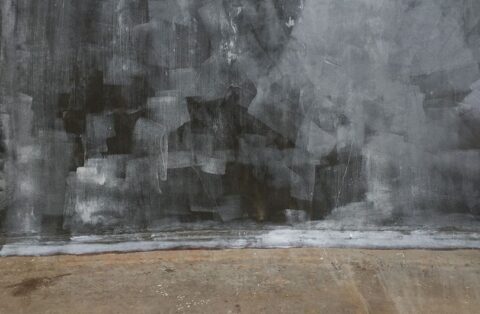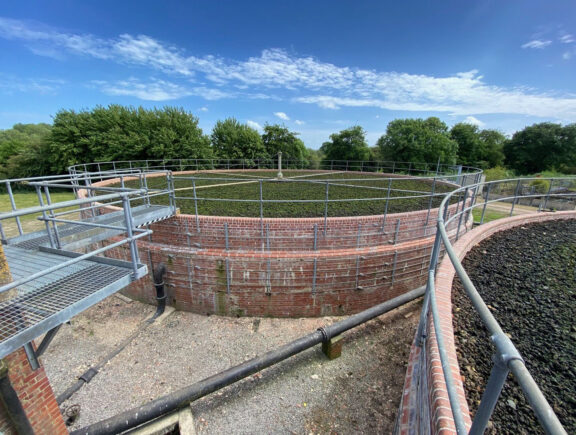Works included HPWJ (high pressure water jetting) to the walls, localised treatment to existing cracks using a suitable cementitious repair mortar and the application of waterproof and chemical resistant coatings.
On inspection, Stonbury highlighted additional damages to a section of the internal wall, this had been caused by the removal of an existing staircase prior to the works. A new access stairway was not required as the client had plans for an alternative entry point to be installed at a later date.
Shuttering and a concrete pour were used on the perimeter edge and the substrate was levelled using a cement mortar to ensure a smooth finish, prior to rendering. Re-pointing was used to repair and stabilise coping stones around the top of both tanks which had been previously damaged.
Once preparation to the substrate had been completed, a cementitious render coat was applied to all wall surfaces at a 2mm depth, this was followed by the application of a water-based epoxy primer system. The primer used was a VOC (volatile organic compound) free material and could be applied at ambient temperature.
The tanks then received three coats of a polyurethane chemical resistant lining system. The coating is fully waterproof and will allow for future elongation and crack growth. This was vital due to the large number of hairline cracks found in the existing wall substrate.
Once applied, the lining required a 20-day curing period at 10°c as per the manufacturers data sheet. This was monitored using data loggers to ensure the temperature did not drop prior to the final clean.
Following a successful cure period, the asset was cleaned, inspected and handed back to the client ready for return to service when required.








